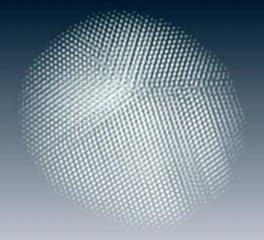"Our method allows the 3-D imaging of the local structures in materials at atomic resolution, and it is expected to find application in materials sciences, nanoscience, solid state physics and chemistry," he said.
"It turns out that there are details we can only see when we can look at materials in three dimensions," said co-author Laurence D. Marks, a professor of materials science and engineering at Northwestern's McCormick School of Engineering and Applied Science.
"We have had suspicions for a long time that there was more going on than we could see from the flat images we had," Marks said. "This work is the first demonstration that this is true at the atomic scale."
Nanotechnology expert Pulickel M. Ajayan, the Benjamin M. and Mary Greenwood Anderson Professor of Engineering at Rice University complimented the research.
"This is the first instance where the three-dimensional structure of dislocations in nanoparticles has been directly revealed at atomic resolution," Ajayan said. "The elegant work demonstrates the power of electron tomography and leads to possibilities of directly correlating the structure of nanoparticles to properties, all in full 3-D view."
Defects can influence many properties of materials, and a technique for visualizing these structures at atomic resolution could lead to new insights beneficial to researchers in a wide range of fields.
"Much of what we know about how materials work, whether it is a catalyst in an automobile exhaust system or the display on a smartphone, has come from electron microscope images of how the atoms are arranged," Marks said. "This new imaging method will open up the atomic world of nanoparticles."

Three-dimensional volume renderings of the platinum nanoparticle are reconstructed from 104 experimental projections in which nearly all the atoms of the nanoparticle are visible. Furthermore, 3-D atomic steps at twin boundaries and the 3-D core structure of edge and screw dislocations in the nanoparticle are observed at atomic resolution. (See Figures 2-4 in the paper.) These dislocations and the atomic steps at the twin boundaries, which appear to be stress-relief mechanisms, are not visible in conventional 2-D projections.
(Photo Credit: Chien-Chun Chen, UCLA)

This is a graphic representation of a 3-D atomic resolution screw dislocation in a platinum nanoparticle.
(Photo Credit: Chien-Chun Chen and I-Sheng Chou, UCLA)
Source: Northwestern University